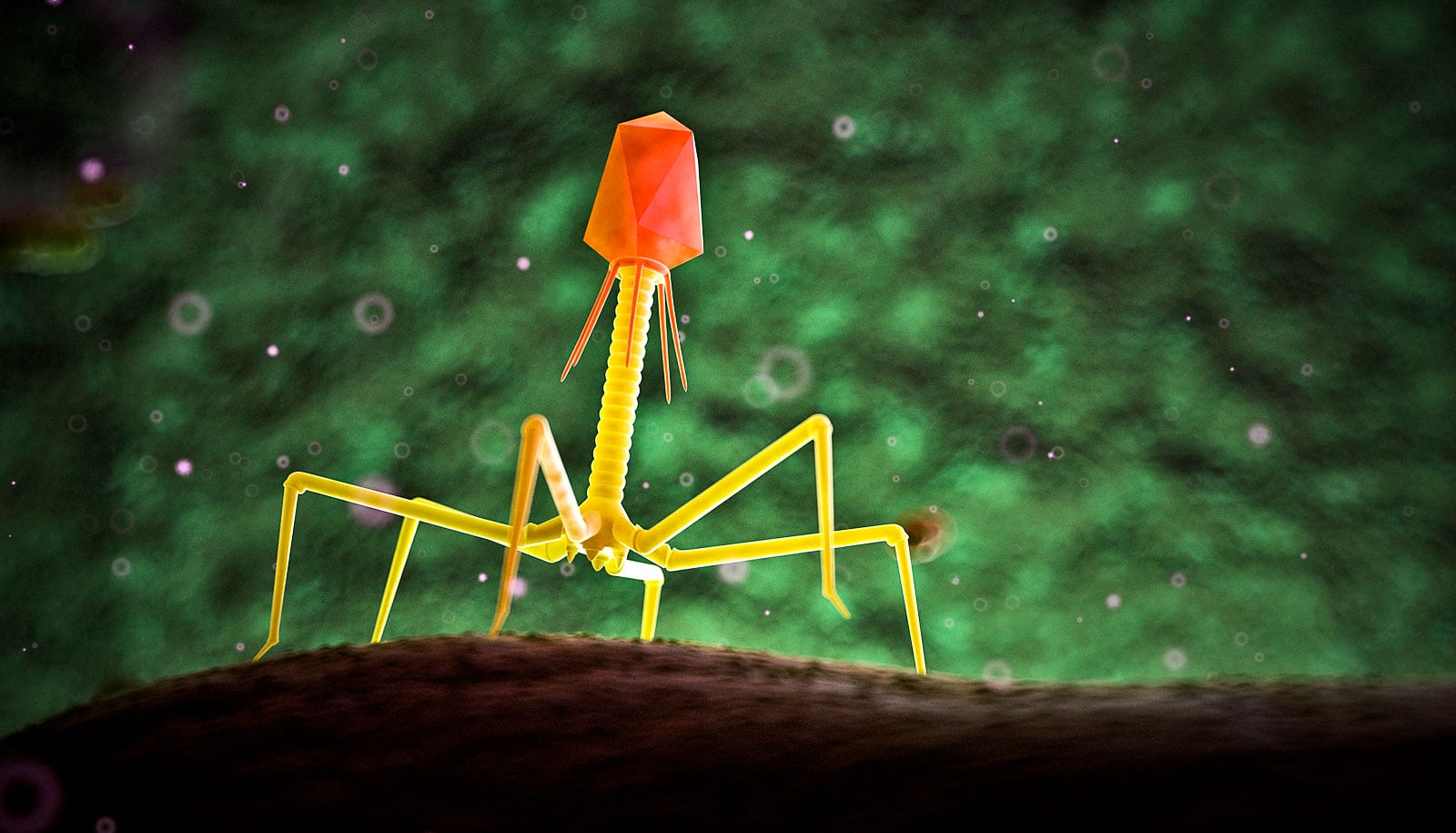In order to map one of the world’s largest viruses, scientists took a DIY approach to build a retrofitted cryo-electron microscope.
“If the common cold virus is scaled to the size of a ladder, then the giant Samba virus is bigger than the Washington Monument,” says Kristin Parent, assistant professor of biochemistry and molecular biology at Michigan State University and coauthor of the paper in the journal Viruses. “Cryo-EM allowed us to map this virus’ structure and observe the proteins it uses to enter, or attack, cells.”
“If you scoop up a handful of water from Lake Michigan, you are literally holding more viruses than there are people on the planet.”
It seems counterintuitive that bigger organisms are harder to see, but they are when using cryo-electron microscopy. That’s because scientists usually use these microscopes to look at thin specimens. The microscopes can’t decipher larger organisms to reveal their biological mechanisms. For thick samples, scientists see only dark gray or black blobs instead of seeing the molecular framework.
Cryo-EM allowed Parent’s team to image the giant Samba virus and understand the structures that allow it to enter an amoeba. Once inside, Samba opens one of its capsid layers and releases its nucleocapsid—which carries the genetic cargo that sparks an infection. While Samba isn’t known to cause any diseases in humans, its cousin, the mimivirus, may be a culprit for causing some respiratory ailments in humans.
“If you scoop up a handful of water from Lake Michigan, you are literally holding more viruses than there are people on the planet,” says Parent, who published the paper with Jason Schrad and Eric Young, biochemistry and molecular biology graduate students. “While scientists can’t study every virus on Earth, the insights we glean from viruses like the giant Samba can help us understand the mechanisms of other viruses in its family, how they thrive, and how we can attack them.”
3D-print a microscope to play soccer with microbes
As bacteria become more resistant to antibiotics, looking for new ways to fight diseases will continue to grow in importance. Parent’s lab also studies how bacteria-infecting viruses enter cells using this method, which could potentially lead to new antibacterial treatments. Yet the world’s best cryo-EM microscope costs more than $5 million. Limited by funds but not drive, Parent was able to upgrade an existing microscope at MSU to do cryo-EM.
She retrofitted a cryostage onto a traditional transmission electron microscope. This keeps viruses frozen in liquid nitrogen while they’re under study. Parent and her team then added a Direct Electron DE-20 detector, a powerful camera.
Parent didn’t invent cryo-EM, but the cutting-edge microscopy has applications across many fields, from those addressing a single protein to others studying entire cells. Virtually anyone studying complex molecular machines can advance their work with this tool, Parent adds.
Source: Michigan State University



